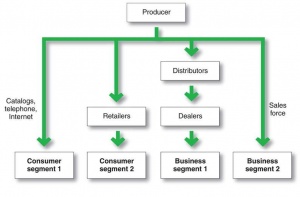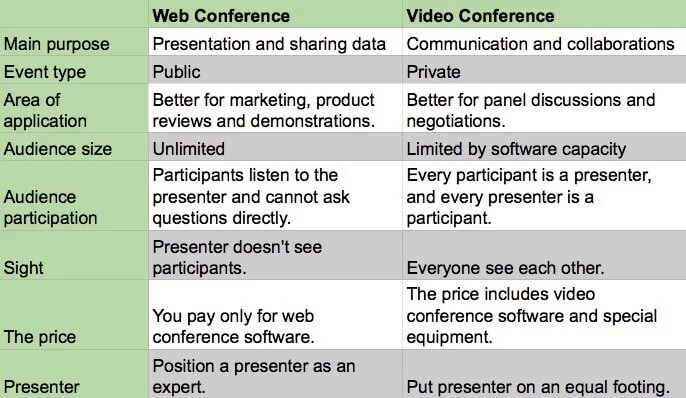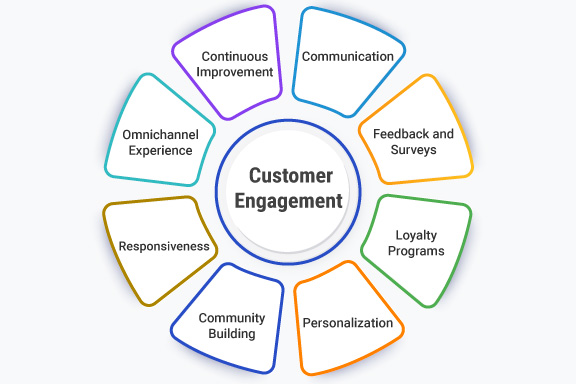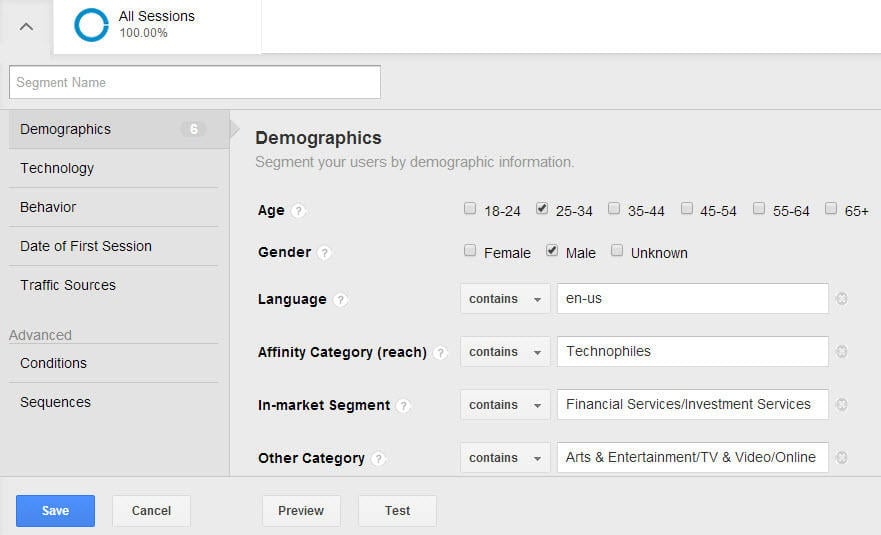
Published: Dec 2, 2024
What is Content Marketing Strategy? A Comprehensive Guide
What is Content Marketing Strategy? A Comprehensive Guide
I’ve got a confession to make… I used to think content marketing was just about churning out blog posts and crossing my fingers. Boy, was I wrong! After years of trial and error (and a few facepalm moments), I’ve cracked the code on what makes a content marketing strategy truly shine. Ready to dive in and avoid my rookie mistakes?
TLDR: What exactly is a content marketing strategy, and why does it matter for your business?
1️⃣ What is a content marketing strategy?
A content marketing strategy is a plan that guides the creation, distribution, and management of valuable, relevant content to attract and retain a clearly defined audience – ultimately driving profitable customer action.
2️⃣ Why is a content marketing strategy important?
It helps businesses build brand awareness, establish authority in their industry, generate leads, and nurture customer relationships through consistent, high-quality content that addresses audience needs and pain points.
3️⃣ What are the key components of an effective content marketing strategy?
An effective strategy includes clear goals, audience personas, content types and formats, distribution channels, a content calendar, and metrics for measuring success.
Table of Contents
- Understanding Content Marketing Strategy
- Key Components of a Content Marketing Strategy
- Measuring and Optimizing Your Strategy
- Future Trends in Content Marketing Strategy
- Creating Your Content Marketing Strategy
- Common Content Marketing Strategy Mistakes
- Implementing Your Content Marketing Strategy
Understanding Content Marketing Strategy
Let’s kick things off with a deep dive into what content marketing strategy really means. Trust me, it’s not just a fancy buzzword – it’s the secret sauce that can take your business from “meh” to “wow!”
Content Marketing Institute Definition
The folks over at the Content Marketing Institute define content marketing strategy as:
“A strategic marketing approach focused on creating and distributing valuable, relevant, and consistent content to attract and retain a clearly defined audience — and, ultimately, to drive profitable customer action.”
But what does that actually mean for you and your business? Let’s break it down.
Key Elements of a Content Marketing Strategy
-
- Who are you trying to reach?
- What problems do they have that you can solve?
-
- What types of content will resonate with your audience?
- How often will you publish?
-
- Where does your audience hang out online?
- Which platforms will you use to share your content?
Key Performance Indicators (KPIs)

- How will you measure success?
- What metrics matter most for your goals?
Why Content Marketing Strategy Matters
You might be thinking, “Can’t I just wing it?” Sure, you could – but here’s why that’s a bad idea:
- Consistency: A strategy keeps you on track, even when you’re busy or uninspired.
- Focus: It helps you avoid the “shiny object syndrome” of chasing every new trend.
- Efficiency: You’ll save time and resources by planning ahead.
- Results: A well-executed strategy leads to better ROI and business growth.
Content Marketing vs. Traditional Marketing
Here’s the deal: content marketing isn’t about shouting “Buy my stuff!” from the rooftops. It’s about providing value and building relationships. Check out these differences:
| Traditional Marketing | Content Marketing |
|---|---|
| Interruption-based | Permission-based |
| Product-centric | Customer-centric |
| Short-term focus | Long-term focus |
| Broad audience | Targeted audience |
| One-way communication | Two-way engagement |
Real-World Success Stories
Don’t just take my word for it. Let’s look at some brands killing it with content marketing:
-
- Their “Will It Blend?” YouTube series went viral, boosting sales by 700%!
-
- Their OPEN Forum for small business owners has become a go-to resource, driving customer loyalty and acquisition.
-
- Their comprehensive inbound marketing resources have made them a thought leader in the industry.
The Bottom Line
A solid content marketing strategy isn’t just nice to have – it’s essential for modern businesses. It helps you connect with your audience, build trust, and ultimately drive growth. So, are you ready to roll up your sleeves and craft a strategy that’ll knock your competitors’ socks off? Let’s do this!
Key Components of a Content Marketing Strategy
Alright, let’s break down the essential pieces of a killer content marketing strategy. Think of it like building a custom car - you need all the right parts working together to create something that really purrs.
Defined Goals and Objectives
First things first - what are you trying to achieve? Maybe you want to:
- Boost brand awareness
- Generate more leads
- Increase sales
- Improve customer retention
Whatever it is, get specific. Instead of saying “I want more traffic,” try “I want to increase organic traffic by 25% in the next 6 months.” That way, you’ll know exactly what you’re aiming for.
Target Audience Research
You wouldn’t buy a gift without knowing who it’s for, right? Same goes for content. Dig deep into who your ideal customers are:
- What keeps them up at night?
- Where do they hang out online?
- What kind of content do they consume?
Create detailed buyer personas. Give them names, backstories, the works. It’ll make creating content that resonates so much easier.
Content Audit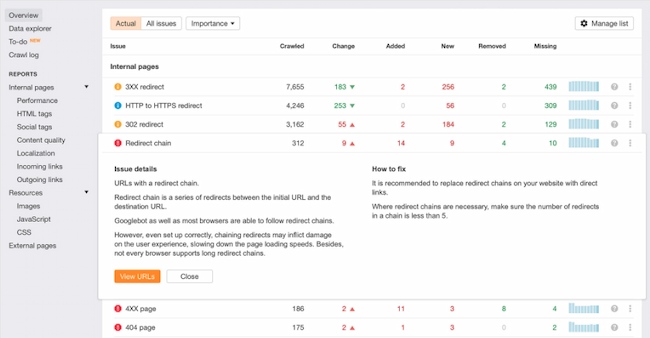
Before you start churning out new stuff, take a good hard look at what you’ve already got. What’s working? What’s falling flat? Use tools like Google Analytics to see which pieces are driving traffic and conversions.
Content Types and Formats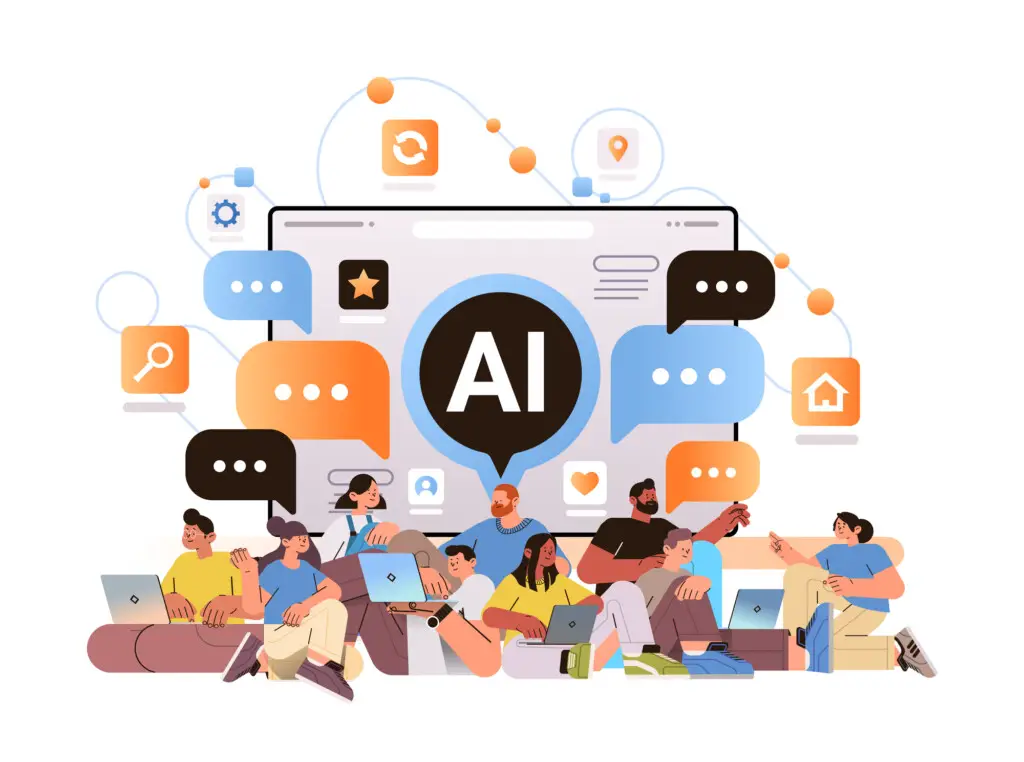
Mix it up! Different folks prefer different content types. Some popular options include:
Don’t be afraid to experiment. I once created a series of memes for a B2B software company, and they ended up being our most shared content ever!
Content Calendar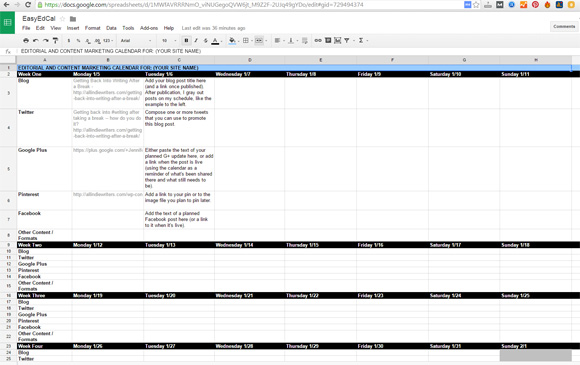
Consistency is key in content marketing. A content calendar helps you plan what you’ll publish and when. It keeps you on track and helps you hit those seasonal topics right on time.
Pro tip: Use a tool like Trello or Asana to manage your calendar. It’ll save you a ton of headaches.
Distribution Channels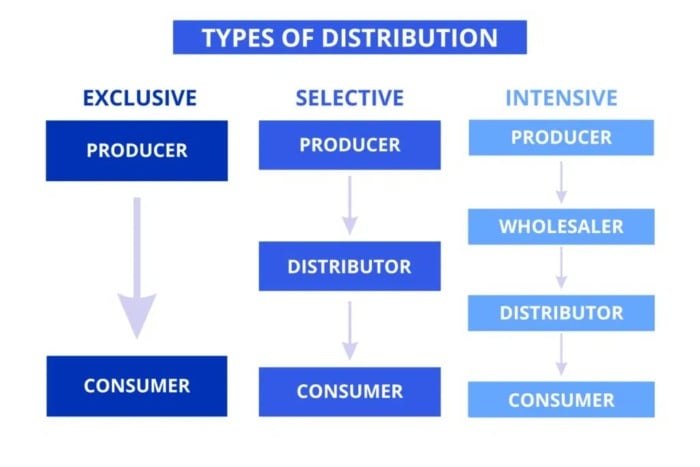
Creating great content is only half the battle. You need to get it in front of the right eyeballs. Some channels to consider:
(Facebook, LinkedIn, Twitter, etc.)
Email newsletters
Guest posting on industry blogs
(Google Ads, social media ads)
Remember, it’s better to do a few channels well than to spread yourself too thin.
Key Performance Indicators (KPIs)
How will you know if your strategy is working? Pick some key metrics to track, like:
- Website traffic
- Time on page
- Social shares
- Email sign-ups
- Conversion rates
Don’t get overwhelmed by data. Focus on the metrics that directly tie to your goals.
Content Creation Process
Who’s going to create all this awesome content? Will you do it in-house or hire freelancers? How will you maintain quality control?
Set up a clear process for ideation, creation, editing, and publishing. Trust me, it’ll save you a lot of stress down the line.
Budget Allocation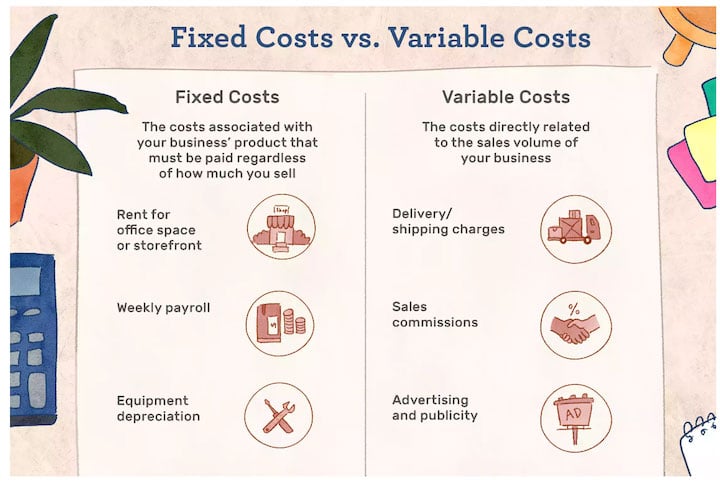
Content marketing isn’t free. You’ll need to budget for things like:
- Content creation tools
- Paid distribution
- Freelancer or agency fees
- Analytics software
Be realistic about what you can afford, but remember - quality content is an investment, not an expense.
By nailing these key components, you’ll be well on your way to a content marketing strategy that doesn’t just look good on paper, but delivers real results. Remember, it’s not about being perfect right out of the gate. Start with what you can manage, measure your results, and adjust as you go. Before you know it, you’ll be a content marketing pro!
Measuring and Optimizing Your Strategy
Alright, let’s talk about measuring and optimizing your content marketing strategy. This is where the rubber meets the road, folks. You’ve put in all this work creating awesome content, but how do you know if it’s actually working? Let’s dive in.
Key Performance Indicators (KPIs)
First things first, you need to know what success looks like. Here are some KPIs you might want to track:
-
- Are more people visiting your site?
- Where are they coming from?
-
- How long are people staying on your pages?
- Are they clicking through to other content?
-
- Are visitors taking the actions you want them to?
- This could be signing up for a newsletter, downloading a guide, or making a purchase.
-
- Likes, shares, comments
- Are people engaging with your content on social platforms?
-
- Are you ranking for your target keywords?
- Is your organic search traffic increasing?
Analytics Tools
You can’t improve what you don’t measure. Here are some tools to help you track your KPIs:
-
- The gold standard for website analytics
- Tracks traffic, user behavior, and conversions
-
- Great for tracking SEO performance and competitor analysis
-
- Manages and measures social media performance
-
- All-in-one marketing software that tracks leads and conversions
A/B Testing
Don’t just guess what works - test it! A/B testing lets you compare two versions of something to see which performs better. You can test:
- Email subject lines
- Blog post titles
- Call-to-action buttons
- Landing page layouts
I once increased email open rates by 15% just by tweaking the subject line. Small changes can make a big difference!
Content Audit
Regularly review your existing content. Which pieces are performing well? Which ones are falling flat? Use this info to guide your future content creation.
- Update and repurpose high-performing content
- Identify gaps in your content strategy
- Remove or improve underperforming content
User Feedback
Don’t forget to actually talk to your audience! Use surveys, comments, and social media to gather feedback. What do they want to see more of? What questions do they have that you haven’t answered yet?
Competitor Analysis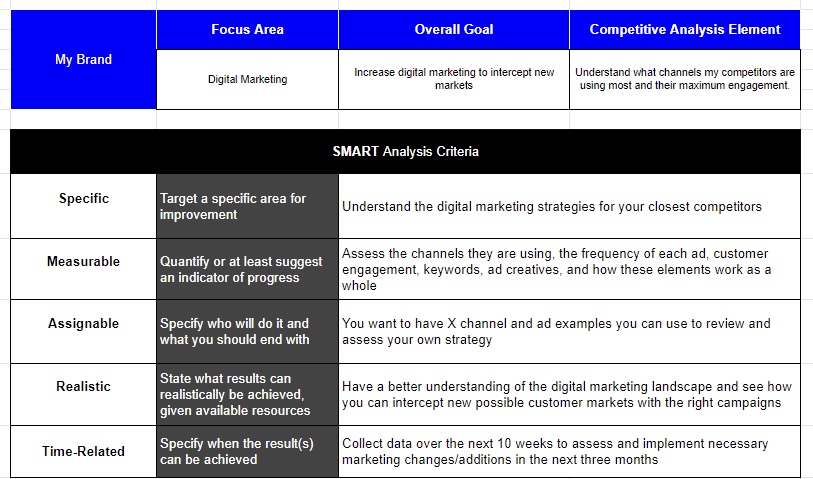
Keep an eye on what your competitors are doing. What topics are they covering? What types of content are getting the most engagement? This can give you ideas for your own strategy.
Continuous Optimization
Remember, your content marketing strategy isn’t set in stone. It should be a living, breathing thing that evolves based on your results. Here’s how to keep improving:
- Regular Reviews: Set aside time each month or quarter to review your KPIs
- Adjust Your Strategy: Based on what’s working (and what’s not), tweak your approach
- Stay Updated: Keep learning about new content marketing trends and best practices
- Experiment: Don’t be afraid to try new things. That viral TikTok challenge? It might just work for your brand!
ROI Calculation
At the end of the day, you need to know if your content marketing efforts are paying off. Calculate your ROI by comparing your content marketing costs to the revenue it generates.
For example, if you spent $5,000 on content marketing last month and it generated $15,000 in sales, your ROI would be 200%. Not too shabby!
Remember, measuring and optimizing your content marketing strategy isn’t a one-time thing. It’s an ongoing process that helps you continuously improve and get better results over time. So keep tracking, keep testing, and keep refining. Your future self (and your boss) will thank you!
Future Trends in Content Marketing Strategy
The content marketing landscape is always evolving, and staying ahead of the curve is crucial. Let’s dive into some exciting trends that are shaping the future of content marketing strategy.
Artificial Intelligence (AI) and Machine Learning
AI is revolutionizing how we create and distribute content. Here’s how:
- Content Creation: Tools like GPT-3 are helping marketers generate ideas and even draft content faster than ever.
- Personalization: AI algorithms can analyze user behavior to deliver hyper-personalized content experiences.
- Chatbots: These AI-powered assistants are becoming more sophisticated, providing personalized content recommendations and customer support.
I recently used an AI tool to help brainstorm blog post ideas, and it came up with angles I hadn’t even considered. It’s not about replacing human creativity, but augmenting it.
Video Content Dominance
Video isn’t just a trend anymore - it’s the new normal. We’re seeing:
- Short-form Videos: Platforms like TikTok and Instagram Reels are dominating attention spans.
- Live Streaming: Brands are using live video for product launches, Q&As, and behind-the-scenes content.
- Video SEO: As search engines get better at indexing video content, optimizing videos for search is becoming crucial.
Voice Search Optimization
With the rise of smart speakers and voice assistants, optimizing content for voice search is more important than ever. This means:
- Focusing on natural language and conversational keywords
- Creating content that answers specific questions
- Optimizing for local searches (many voice searches are location-based)
Interactive Content
Static content is giving way to more engaging, interactive experiences:
- Quizzes and Assessments: These not only engage users but can also generate valuable data.
- 360-degree Videos: Brands like National Geographic are using these to create immersive experiences.
- Augmented Reality (AR) Companies like IKEA are using AR to let customers visualize products in their homes.
User-Generated Content (UGC)
Consumers trust content from their peers more than brand-created content. We’re seeing more brands:
- Encouraging customers to share photos and videos with branded hashtags
- Featuring customer reviews and testimonials prominently
- Creating challenges or contests that inspire UGC
Niche Content and Micro-Influencers
It’s not always about reaching the widest audience. Sometimes, it’s about reaching the right audience:
- Brands are partnering with micro-influencers who have smaller but highly engaged followings
- Creating super-specific content for niche audiences can lead to higher engagement and conversion rates
Content Atomization
This strategy involves breaking down larger pieces of content into smaller, more digestible formats:
- Turning long-form blog posts into a series of social media posts
- Creating infographics from data-heavy articles
- Extracting quotes or tips for easy sharing
Sustainable and Ethical Content
Consumers are increasingly concerned about sustainability and ethics. This means:
- Creating content that highlights a brand’s environmental and social initiatives
- Being transparent about business practices
- Addressing important social issues in a authentic way
Data Privacy and Content Marketing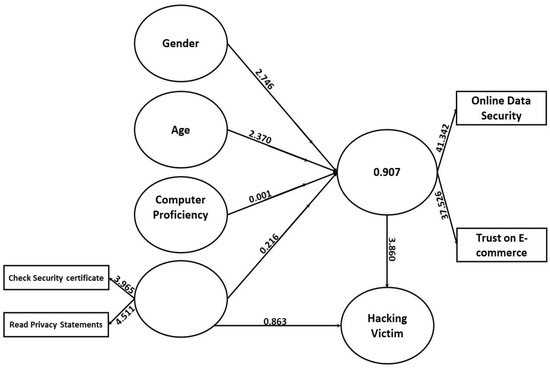
With regulations like GDPR and CCPA, content marketers need to be more mindful of data privacy:
- Being transparent about data collection and usage
- Offering clear opt-in and opt-out options
- Creating valuable content that encourages voluntary data sharing
The future of content marketing is dynamic and exciting. By staying on top of these trends and continuously adapting your strategy, you’ll be well-positioned to create content that resonates with your audience and drives real business results. Remember, it’s not about jumping on every trend, but about understanding which ones align with your brand and audience needs. Keep experimenting, keep measuring, and most importantly, keep creating amazing content!
Creating Your Content Marketing Strategy
Let’s roll up our sleeves and dive into creating a content marketing strategy that’ll knock your socks off. I’ve been through this process countless times, and I’ll share some insider tips to make your journey smoother.
Set Clear Goals and Objectives
First things first, you need to know where you’re headed. Are you looking to boost brand awareness, generate leads, or increase sales? Maybe all three? Whatever your goals, make them SMART:
- Specific
- Measurable
- Achievable
- Relevant
- Time-bound
For example, instead of saying “I want more website traffic,” try “I want to increase organic traffic by 25% in the next 6 months.”
Know Your Audience
You can’t create content that resonates if you don’t know who you’re talking to. Dive deep into understanding your target audience:
- Demographics (age, location, income, etc.)
- Psychographics (interests, values, lifestyle)
- Pain points and challenges
- Preferred content formats and channels
I once worked with a client who thought their audience was middle-aged professionals, but after some research, we discovered their most engaged users were actually recent college grads. This completely changed our content strategy!
Content Audit
Before you start creating new content, take stock of what you already have:
- List all your existing content
- Analyze its performance (traffic, engagement, conversions)
- Identify gaps in your content
- Look for opportunities to update or repurpose high-performing pieces
Choose Your Content Types
Mix it up! Different types of content can help you reach different goals:
- Blog posts Great for SEO and establishing authority
- Videos Perfect for explaining complex topics or showcasing products
- Infographics Ideal for presenting data in a visually appealing way
- Podcasts Excellent for building a loyal audience and showcasing expertise
- Ebooks Valuable for lead generation and in-depth education
Develop a Content Calendar
Consistency is key in content marketing. A content calendar helps you plan what you’ll publish and when. Here’s a simple template to get you started:
| Date | Content Type | Topic | Target Keyword | Distribution Channels |
|---|---|---|---|---|
| May 1 | Blog Post | “10 Tips for Better SEO” | “SEO tips” | Website, LinkedIn, Email |
| May 15 | Video | “How to Use Our New Product” | “Product tutorial” | YouTube, Facebook, Website |
| June 1 | Infographic | “Content Marketing Stats 2024” | “Content marketing statistics” | Pinterest, Twitter, Website |
Choose Your Distribution Channels
Creating great content is only half the battle. You need to get it in front of your audience. Consider:
(Which ones does your audience use most?)
Email newsletters
Guest posting on industry blogs
(Google Ads, social media ads)
Allocate Resources
Determine who will be responsible for each aspect of your content marketing:
- Content creation (writers, designers, videographers)
- Editing and proofreading
- Distribution and promotion
- Analytics and reporting
Don’t forget to budget for tools and software you might need, like SEMrush for keyword research or Canva for graphic design.
Set Up Analytics
You can’t improve what you don’t measure. Set up analytics tools to track your content’s performance:
- Google Analytics for website traffic and user behavior
- Social media analytics for engagement metrics
- Email marketing software for open rates and click-through rates
Create a Content Creation Process
Streamline your content creation with a clear process:
- Ideation (brainstorming topics)
- Research and outlining
- Creation (writing, designing, filming, etc.)
- Editing and proofreading
- Optimization (for SEO, social sharing, etc.)
- Publication and promotion
Optimize for SEO
Don’t forget to optimize your content for search engines:
- Research and use relevant keywords
- Create compelling meta titles and descriptions
- Use header tags (H1, H2, H3) effectively
- Optimize images with alt text
- Include internal and external links
Plan for Promotion
Creating content is just the beginning. Plan how you’ll promote each piece:
- Share on social media (multiple times, not just once)
- Include in your email newsletter
- Reach out to influencers or industry experts for shares
- Consider paid promotion for your best content
Remember, creating a content marketing strategy isn’t a one-and-done deal. It’s an ongoing process of creation, measurement, and optimization. Keep track of what’s working and what’s not, and don’t be afraid to adjust your strategy as you go. With persistence and creativity, you’ll be well on your way to content marketing success!
Common Content Marketing Strategy Mistakes
Let’s face it, we’ve all made mistakes in our content marketing journeys. I know I have! But the good news is, we can learn from them. Here are some common pitfalls to watch out for:
Lack of Clear Goals
I once worked with a client who was pumping out content like there was no tomorrow. Blog posts, social media updates, videos - you name it. But when I asked about their goals, I got blank stares. Big mistake!
Without clear objectives, you’re just creating content for the sake of it. Here’s how to fix it:
- Set SMART goals (Specific, Measurable, Achievable, Relevant, Time-bound)
- Align your content strategy with your business objectives
- Regularly review and adjust your goals based on performance
Ignoring Your Target Audience
You might have the most brilliant content in the world, but if it doesn’t resonate with your audience, it’s wasted effort. I learned this the hard way when I created a series of technical blog posts for a client, only to find out their audience was mostly beginners.
To avoid this:
- Create detailed buyer personas
- Conduct surveys and interviews with your actual customers
- Use social listening tools to understand your audience’s pain points and interests
Inconsistent Publishing
I get it, life gets busy. But sporadic content creation is a surefire way to lose your audience’s attention. One month you’re posting daily, the next you’ve gone MIA. Sound familiar?
The fix:
- Create a realistic content calendar
- Use scheduling tools like Buffer or Hootsuite to plan ahead
- Batch create content when you’re feeling inspired
Neglecting SEO
SEO isn’t just for the tech geeks. If you’re not optimizing your content for search engines, you’re missing out on a huge opportunity. But don’t go overboard - keyword stuffing is so 2005.
Here’s what to do:
- Research relevant keywords using tools like SEMrush or Ahrefs
- Optimize your content naturally for these keywords
- Don’t forget about technical SEO (site speed, mobile-friendliness, etc.)
Focusing on Quantity Over Quality
I once had a client who insisted on publishing a new blog post every single day. The result? Burnt-out writers and mediocre content. Remember, it’s better to publish one amazing piece of content than five so-so ones.
To maintain quality:
- Set realistic content goals
- Invest in thorough research and editing
- Repurpose high-performing content instead of always creating new
Ignoring Data and Analytics
If you’re not measuring your content’s performance, how do you know what’s working? I’ve seen too many marketers rely on gut feeling instead of hard data.
The solution:
Set up Google Analytics
(it’s free!)
Track key metrics like traffic, engagement, and conversions
Use this data to inform your future content strategy
Failing to Promote Your Content
“If you build it, they will come” doesn’t apply to content marketing. I once spent weeks crafting an in-depth industry report, only to see it gather digital dust because I didn’t promote it properly.
Try this instead:
- Spend as much time promoting your content as you do creating it
- Use a mix of organic and paid promotion strategies
- Leverage your network and industry relationships to amplify your reach
Not Optimizing for Mobile
With more than half of web traffic coming from mobile devices, ignoring mobile optimization is a huge mistake. I learned this lesson when I realized a client’s beautifully designed infographic was unreadable on smartphones.
The fix:
- Use responsive design for your website
- Test your content on various devices before publishing
- Consider creating mobile-specific content (like vertical videos for Instagram Stories)
Ignoring the Customer Journey
Not all content is created equal. What works for someone just discovering your brand might not resonate with a loyal customer. I’ve seen companies bombard their email list with top-of-funnel content, completely ignoring their subscribers’ needs.
To avoid this:
- Map out your customer journey
- Create content for each stage (awareness, consideration, decision, retention)
- Use marketing automation to deliver the right content at the right time
Forgetting About Distribution Channels
Creating great content is only half the battle. If you’re not distributing it effectively, you’re missing out on potential reach and engagement. I once wrote an amazing blog post that got crickets… until I started promoting it on LinkedIn, where my target audience actually hung out.
Here’s what to do:
- Research where your audience spends their time online
- Tailor your content for different platforms (Twitter threads, LinkedIn articles, YouTube videos, etc.)
- Don’t be afraid to repurpose content across multiple channels
Remember, we all make mistakes. The key is to learn from them and continuously improve your content marketing strategy. Keep experimenting, stay curious, and most importantly, always put your audience first. Happy marketing!
Implementing Your Content Marketing Strategy
Alright, let’s roll up our sleeves and dive into the nitty-gritty of putting your content marketing strategy into action. I’ve been in the trenches, and I’ll share some real-world tips to help you avoid the pitfalls I’ve stumbled into.
Build Your Content Creation Dream Team
First things first, you need the right people on board. Here’s what worked for me:
- Content Strategist
- This is your big-picture person who keeps everything aligned with your goals.
- Writers
- I’ve found a mix of in-house and freelance writers gives you the best of both worlds.
- Graphic Designer

- Visual content is king, folks. Don’t skimp here.
- Video Producer
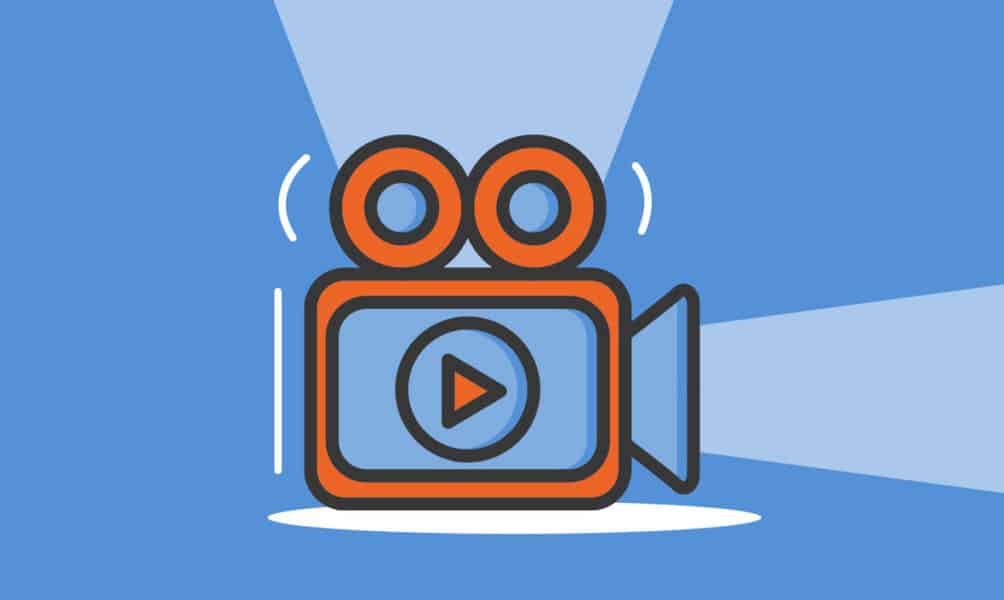
- Even if you’re just doing simple videos, having someone who knows their way around a camera is invaluable.
- SEO Specialist
- Trust me, you want someone who can make sure your brilliant content actually gets found.
Set Up Your Content Production Workflow
I learned the hard way that without a solid workflow, things can get messy fast. Here’s a streamlined process that’s worked wonders for me:
- Ideation: Use tools like BuzzSumo or AnswerThePublic to generate ideas that resonate with your audience.
- Planning: Map out your content in a tool like Trello or Asana. I swear by Trello for its visual appeal.
- Creation: This is where the magic happens. Give your team the time and resources they need to create killer content.
- Review: Set up a review process. I use a simple two-step review: first by the content strategist, then by a subject matter expert.
- Optimization: This is where your SEO specialist shines, making sure your content is primed for search engines.
- Publication: Use a tool like WordPress or Webflow to manage your content management system (CMS).
- Distribution: More on this in a bit, but don’t forget to spread the word!
Develop a Content Calendar
A content calendar is your roadmap. Here’s how I structure mine:
| Date | Content Type | Topic | Target Keyword | Distribution Channels | Assigned To |
|---|---|---|---|---|---|
| May 1 | Blog Post | “10 SEO Myths Busted” | “SEO myths” | Website, LinkedIn, Email | Sarah (Writer) |
| May 15 | Infographic | “Content Marketing Stats 2024” | “content marketing statistics” | Pinterest, Twitter, Website | Mike (Designer) |
| June 1 | Video | “Behind the Scenes: Our Process” | “content creation process” | YouTube, Facebook, Website | Lisa (Video Producer) |
Optimize Your Content for SEO
SEO isn’t just about keywords anymore. Here’s what I focus on:
- User Intent Understand why someone is searching for a topic and address that in your content.
- Long-tail Keywords
 These less competitive phrases can be goldmines. I use Google’s Keyword Planner to find them.
These less competitive phrases can be goldmines. I use Google’s Keyword Planner to find them. - Schema Markup
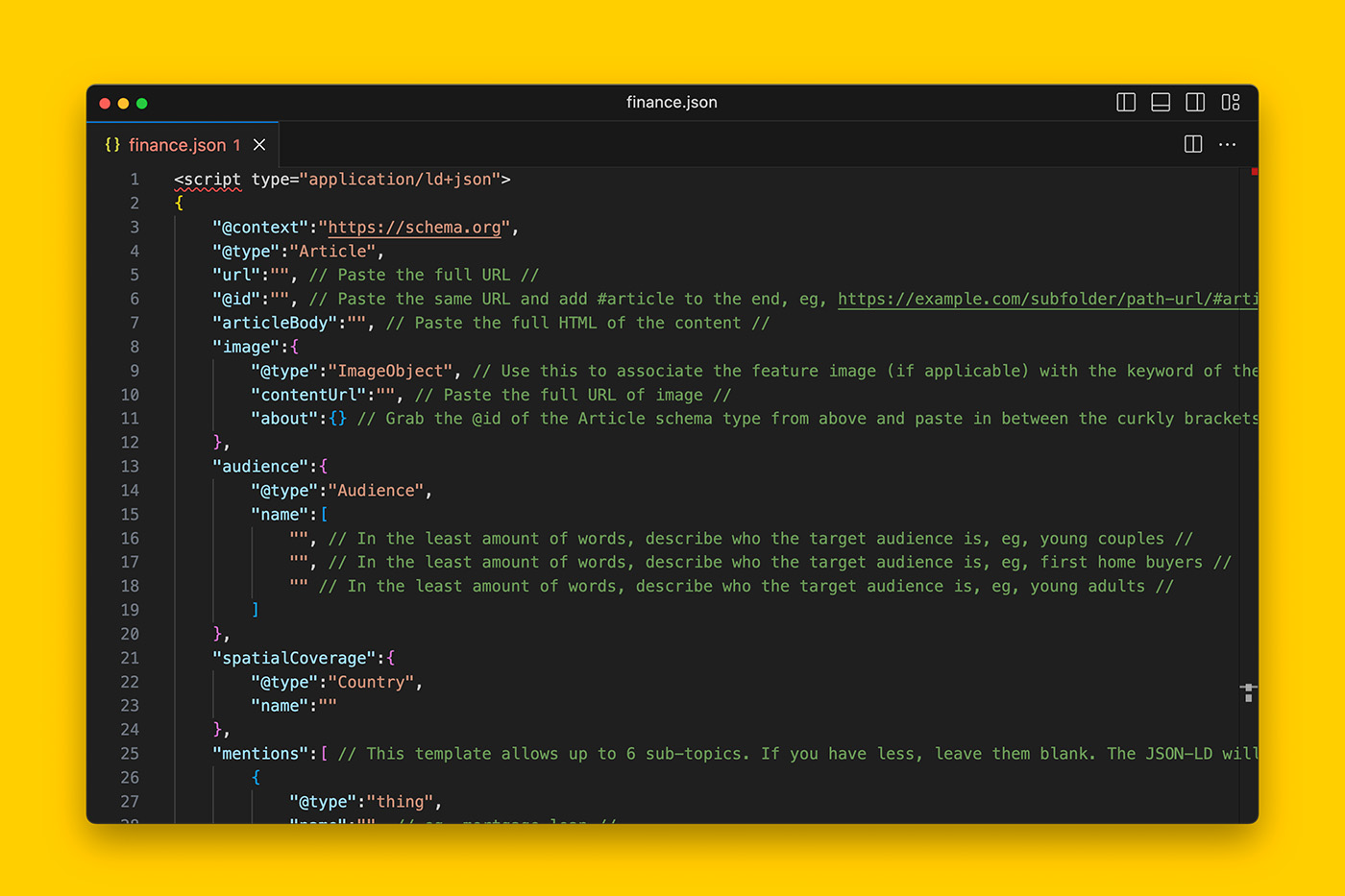 This structured data helps search engines understand your content better.
This structured data helps search engines understand your content better. - Internal Linking: Don’t forget to link to your other relevant content. It helps both users and search engines navigate your site.
Implement a Multi-Channel Distribution Strategy
Creating great content is only half the battle. You need to get it in front of your audience. Here’s my go-to distribution checklist:
- Social Media
- Share on all relevant platforms (LinkedIn, Twitter, Facebook, etc.)
- Use platform-specific features like LinkedIn articles or Twitter threads
- Email Marketing
- Send a newsletter highlighting your best new content
- Use segmentation to send the most relevant content to each subscriber
- Content Syndication
- Paid Promotion
- Use Google Ads or social media advertising to boost your best-performing content
- Influencer Outreach
- Build relationships with industry influencers who can share your content
Measure and Iterate
Remember, implementing your strategy isn’t a “set it and forget it” deal. You need to constantly measure and adjust. Here’s what I track:
- Traffic: Use Google Analytics to monitor website visits
- Engagement: Look at metrics like time on page, bounce rate, and social shares
- Conversions: Track how many leads or sales your content is generating
- SEO Performance: Use tools like SEMrush to monitor your search engine rankings
I review these metrics monthly and use the insights to tweak our strategy. For example, when I noticed our how-to guides were outperforming our other content, we shifted to create more of them.
Foster a Culture of Content
Finally, remember that great content marketing isn’t just about your marketing team. Encourage everyone in your organization to contribute ideas and share your content. I’ve seen amazing results when we got our engineers to write technical blog posts and our customer service team to suggest topics based on common customer questions.
Implementing your content marketing strategy is an ongoing process of creation, distribution, measurement, and optimization. It takes time and effort, but trust me, when you see those engagement numbers climb and the leads start rolling in, it’s all worth it. Now get out there and start creating some amazing content!



